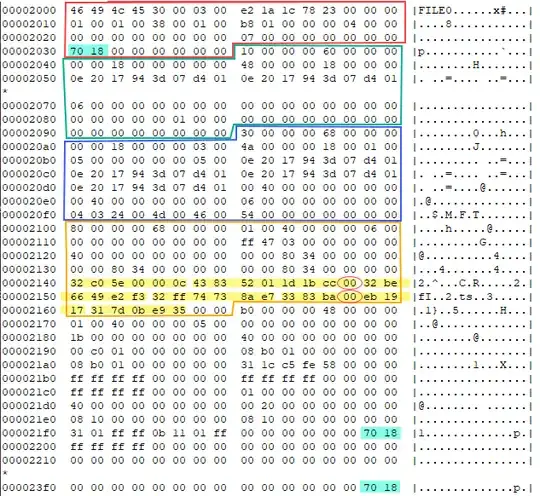I have an example pulled from a hard disk at my house where the NTFS $MFT file contains zeros in the least-significant places of the Cluster Chain Run. Interpreted little-endian, this doesn't make any sense and I'm confused. Can someone explain why these bytes would be here since the field could simply be shorter without them?
In the image below, the large outlines are the FILE header and the Attribute Blocks. In teal, I've highligted the fixup values. In yellow, I've highlighted the pieces of the Cluster Chain Run of the Data attribute block. In red, I've circled two bytes that don't make sense being zeros. Can this be explained?
Caveat: The reason I got into this is because this hard disk experienced thousands of bad sectors. I'm sluething around trying to learn about how a person might recover data. So, if your answer is "you have corruption on the disk", technically that could be a valid answer, but it doesn't seem likely since the fixup values are correct.
